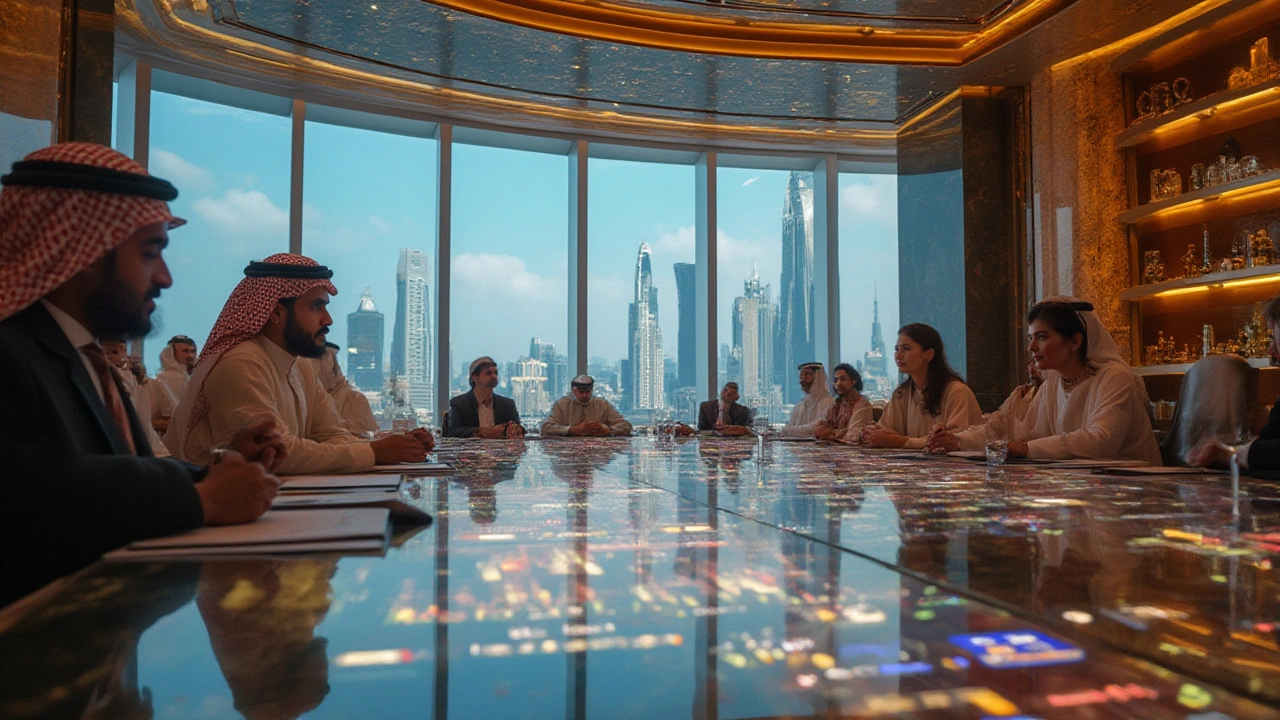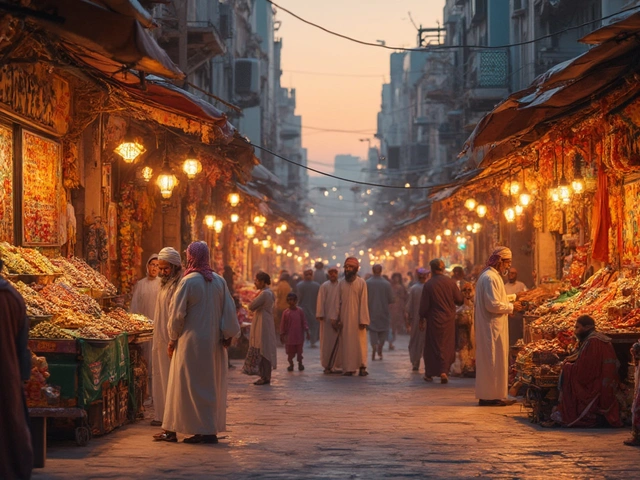Dubai isn’t shy about showing off. Luxury cars, dazzling skyscrapers, gold vending machines—you name it, the city probably has it. But when it comes to real power, forget flashy displays. In the UAE, the biggest flex is being the most powerful bank in a country where money means business. If you’ve ever wondered which financial giant pulls the most weight here, you’re not alone. Let’s break down the financial scene, dig into hard facts, and compare the true heavyweights shaping the UAE’s economy.
Key Takeaways: The Heavyweights of UAE Banking
• First Abu Dhabi Bank (FAB) is the undisputed leader by assets—think over AED 1.2 trillion.
• Emirates NBD isn’t far behind in reach and influence. It’s the king of Dubai-based banks.
• Both banks play a crucial role in the UAE’s economic growth, cross-border payments, and digital innovation.
• Their influence stretches beyond the UAE, with international branches and strong ties to global markets.
• Service, technology, and financial muscle make these banks almost household names in the region.
Who Is the Most Powerful Bank in the UAE? Here’s a Straight Answer
If you want a quick and honest answer: First Abu Dhabi Bank (FAB) holds the crown for being the most powerful bank in the UAE. Seriously, it’s not even close once you look at the numbers. With total assets topping AED 1.2 trillion (that’s around USD 327 billion), FAB easily overshadows every other contender. That alone gives FAB the upper hand not only at home but across the Middle East.
Where does that put Emirates NBD, the homegrown Dubai favorite? It’s top-tier, don’t get me wrong. With assets reported at AED 836 billion (USD 228 billion) by mid-2025, it’s still a beast in the financial world, just not number one on the balance sheet. In practical terms, if you need to move massive funds, grab a chunky corporate loan, or want to feel part of the country’s economic engine, either of these two won’t let you down. But for sheer size, reach, and regional swagger, First Abu Dhabi Bank towers over the rest.
Guide to the UAE’s Banking Landscape: What’s Behind the Power?
The UAE’s banking sector is much more than a backdrop to its flashy lifestyle. Banks here are serious players: they shape real estate, build infrastructure, fund wild tourism projects, and keep the gears turning for small businesses and blue-chip companies alike. The two banks that dominate headlines and markets (FAB and Emirates NBD) got there through a blend of mergers, smart investments, and adapting to crazy-fast changes in how people bank.
FAB was born from the 2017 merger between National Bank of Abu Dhabi (NBAD) and First Gulf Bank. Remember those massive funding projects for Expo 2020 or Etihad Rail? FAB was often behind the scenes, calling the shots. It’s no surprise they serve over 5 million customers and have branches in every key Gulf and Asian market. On the other hand, Emirates NBD is the pride of Dubai, with its own story rooted in the 2007 merger of Emirates Bank International and National Bank of Dubai. It’s almost impossible not to run into one of their ATMs, branches, or billboards here. They power payment systems at Dubai Mall, sponsor community projects, and push digital banking hard—sometimes outpacing even their bigger rival.
What sets UAE banks apart isn’t just their size. It’s their ability to attract foreign investment, offer services in multiple currencies, and introduce game-changing tech. Both FAB and Emirates NBD have invested billions into digital banking. Want to pay your rent in two clicks, get a personal loan approved on your phone, or invest in stocks from your breakfast table? They’ve already got you covered. FAB even set up an AI-powered customer service system that handles basic banking queries instantly, while Emirates NBD launched Liv., a digital-only bank popular with the city’s under-thirty crowd.
If you’re new to banking in the UAE, these giants create a sense of security. Their government connections matter—a lot. FAB and Emirates NBD are both partly state-owned, so there’s an invisible safety net that keeps things stable even when global markets act up. This is why expats and locals trust them to hold their savings, fund their homes, and help with business expansion.
Plus, it’s not just about the rich. These banks also offer entry-level savings options, SME support, and personal banking services tailored for everyday people—from employees to freelancers.

Comparing the Powerhouses: Influence, Reach, and Services
Talking about bank “power” isn’t just about how much money they hold. Let’s break down how these two go head-to-head in the trenches:
- Number of Branches & ATMs: FAB has more than 70 branches and 500+ ATMs across the UAE; Emirates NBD boasts 85+ branches and 650 ATMs, often in more accessible locations (think every mall in Dubai).
- International Reach: FAB leads here, with active branches and offices in Paris, London, Geneva, Hong Kong, Singapore, and more. Emirates NBD holds its own with a Middle East, North Africa, and Turkey presence but fewer offices in the big Western capitals.
- Digital Banking: Both are way ahead of the curve, but Emirates NBD’s Liv. app gets high marks from younger users. FAB puts more muscle into corporate digital solutions for large transactions and investments.
- Customer Base: Emirates NBD claims over 14 million individual customers (including Liv. users), while FAB serves about 5 million—most of whom are corporations, high-net-worth individuals, and government clients.
- Market Capitalization: As of July 2025, FAB’s market cap sits at about AED 200 billion. Emirates NBD is chasing with AED 120 billion—but both are at the top on the Dubai and Abu Dhabi stock markets.
- Product Range: Both offer a sweep of products: mortgages, savings and current accounts, insurance, robo-advisors, SME solutions, expat-focused accounts, sharia-compliant options (Islamic banking), investment banking, and trade finance. FAB leads in corporate and sovereign financing; Emirates NBD dominates consumer and retail banking.
Here’s a side-by-side look to make it easier:
| Bank Name | Total Assets (AED, 2025) | Market Cap (AED, 2025) | Branches (UAE) | International Presence | Flagship Digital Service |
|---|---|---|---|---|---|
| First Abu Dhabi Bank (FAB) | 1.2 Trillion | 200 Billion | 70+ | Global (Europe, Asia, Middle East, US) | FAB Mobile |
| Emirates NBD | 836 Billion | 120 Billion | 85+ | MENA, Turkey, Limited in Europe & Asia | Liv. Digital Bank |
So if your main goal is international transactions or corporate investments, FAB likely has the better tools. But for personal banking perks, cashback offers, and everyday convenience—especially if you live in Dubai or Sharjah—Emirates NBD is hard to beat. Their customer service lines are open late, and they respond fast to social media DMs (try them on X, formerly Twitter, if you need a quick answer).
And don’t ignore other players: Abu Dhabi Commercial Bank (ADCB), Dubai Islamic Bank, and Mashreq Bank are all regional stars. They just aren’t quite at heavyweight champion status—at least, not yet.
Need-To-Know Tips for Banking in the UAE
You might think opening a bank account here is a mission, but that’s just because nobody tells you the inside scoop. First off, most UAE banks, especially the big two, have English-speaking staff—bonus points if you prefer online chat or WhatsApp messages. Documentation is king. You’ll always need your Emirates ID, a passport copy, and proof of address. Some banks—especially if you want a premium account—ask for a salary certificate from your employer.
If you’re shopping for the best deal, compare accounts on aggregator sites like YallaCompare, UAE Banks Federation, or even bank aggregator apps. These tools show you who’s offering cash bonuses for new customers, low international transfer fees, or free airport lounge access.
For digital nomads or people who travel a lot, check which bank supports free or low-fee ATM withdrawals abroad. FAB and Emirates NBD both score well, but the details make a difference. Liv. by Emirates NBD is popular with under-35s and freelancers; everything from opening your account to requesting a statement can be done on your phone, so you may never need to visit a branch. If you travel regionally or make big international transfers, FAB’s international reach (especially connections to Europe and Asia) can really save time and money.
Don’t forget about sharia-compliant banking. Around a quarter of the UAE population prefers Islamic banking solutions, which both FAB and Emirates NBD provide, but Dubai Islamic Bank leads the way on the purest Islamic model.
When it comes to borrowing, leverage your relationship with the bank—higher salary, good credit, and regular account activity open doors to better personal loan rates or a premium credit card with serious rewards. Avoid hidden foreign transaction fees by reading the (many) fine details—the UAE is infamous for “admin” charges. The bigger banks are usually more transparent, and customer reviews posted to Google and Reddit often reveal what the sales pitch leaves out.
And last insider tip: customer service is fast if you have premium or “Elite” status. If you want VIP treatment, mention you’re considering moving your finances to another bank—watch how quickly they offer to waive a fee.
FAQs: Everything You Ever Wondered About UAE Banking Power
- Is First Abu Dhabi Bank safe for foreigners? Absolutely. State backing and strong regulation make FAB one of the safest banks in the Middle East. Your funds are secure, and customer complaints are handled seriously.
- Why do some people prefer Emirates NBD? It’s convenience, plain and simple. More branches, better online interface for retail, and frequent local community engagement make it the go-to for expats living in Dubai, Sharjah, or the Northern Emirates. Plus, Liv. is a hit with digital natives.
- How do UAE banks handle international money transfers? Both FAB and Emirates NBD let you send and receive money worldwide quickly. Transfer times for major currencies (USD, EUR, GBP) can be as fast as 24 hours if sent before daily cut-off. Compare exchange rates and fees, as they often differ by bank and time of year.
- Can I open a zero-balance account as an expat? Yes, both banks have digital-only or basic account options where minimum balances are tiny or zero. However, zero-fee accounts often come with limits—lower daily ATM withdrawal, for instance.
- How do banks in the UAE earn their power? A mix of massive local and international business, government partnerships, digital banking investments, and global branch networks. Being state-owned (partially) gives extra credibility.
Ready to level up your money game in the UAE? Whether you pick the most powerful bank in the UAE (FAB) for business and global reach, or stick with Emirates NBD for everyday convenience, you’re in solid hands either way. Don’t be shy about asking questions, comparing perks, and demanding a little VIP treatment—it’s Dubai, after all.







Dr. Atul James Singh
July 30, 2025 AT 19:47Alright, let's get real about the banking scene in the UAE. This guide might seem like just another corporate fluff piece, but behind those shiny facades lie some seriously complex financial dynamics. UAE banks aren’t just local players; they’re power hubs that influence regional economies massively.
When we say "most powerful," are we talking assets, influence, or political clout? These factors intertwine in a complicated dance, especially in a landscape dominated by state-backed giants. Don't forget, banking in the UAE is also tied to the geopolitical chessboard of the Middle East.
Dive deeper and you see the aggressive strategies these banks use — mergers, digital transformation, and global partnerships. It's a cutthroat market masked in luxury.
If you want to understand which institution really runs the game, consider market share combined with digital innovation and regulatory sway. That's the true measure of power here.
In the end, the guide is just a primer. The real power isn't just the numbers, but the unseen influence these financial giants wield, regionally and globally.
peter may
July 31, 2025 AT 09:57Ah, the perennial quest for the "most powerful bank" in a region as cosmopolitan and economically fluctuating as the UAE! It is, indeed, a pursuit worthy of Socratic inquiry...
But beyond the mere quantitative metrics—assets under management, profitability, or regional footprint—one must consider the qualitative essence: the cultural capital and existential gravitas that these financial institutions embody.
Does power even truly manifest in straightforward terms here, or are we witnessing a carefully curated image, a performance enacted on the gilded stage of capitalism?
In my view, the most powerful bank is less a monolith of fiscal robustness and more an entity that orchestrates the financial symphony with philosophical finesse and a strategic vision transcending mere numbers.
Therefore, this guide, while informative, should inspire us to question deeply the ostensible metrics and ponder the ethereal nature of economic sovereignty.
Tobia Ciottone
August 1, 2025 AT 00:07Ok, I have to say, whenever you talk about the “most powerful bank” in the UAE, you’re not just talking about money. There’s always something else lurking beneath the surface, right?
Like, what about the secret networks and possible backdoor dealings? You think these giants just operate transparently? No way. There's gotta be some shadow players and shady agreements influencing which bank is 'on top.'
Plus, don't forget the geopolitical angle. Banks here aren't just about finance; they’re deeply intertwined with political agendas.
So yeah, while this guide lays out the surface stuff, the real power dynamics are way messier and more hidden. That’s what scares me the most about these so-called 'banking giants.'
Jeff Herman
August 1, 2025 AT 11:30Hey all! Just wanted to toss in a friendly perspective here 😊. It’s pretty awesome how the banking sector in the UAE has grown, especially with all the innovation and digital banking tools they're rolling out.
I believe the strength of a bank isn’t just what’s on their balance sheets but how they connect with their customers and communities. This guide does a good job getting that across, but it’s also important how they foster inclusion and accessibility.
Plus, we can totally see banks embracing fintech to promote smoother, faster transactions. That’s a big deal in today’s world.
Looking forward to seeing which bank really nails that human-to-human connection while staying power-packed financially. It’s a balance worth celebrating! 😊
William Lapes
August 2, 2025 AT 01:40Look, cut the fluff. The UAE banking sector is booming, and there's no mystery which giants dominate—you just have to look at the biggest names with the most assets and market control.
This guide probably dances around the fact that banks like Emirates NBD and First Abu Dhabi Bank are the real ones running the show. They’re loaded with resources, political backing, and they’ve crushed competition.
Money talks and BS walks. Anyone looking for deeper insight just needs to check simple asset reports and market penetration numbers.
Stop overcomplicating it. The most powerful bank is the one printing the biggest profits and controlling the capital flow, period.
Gerry Hodgins
August 3, 2025 AT 05:43I just want to point out a couple of grammar issues I noticed in the guide, because clarity is key when dealing with complex topics like finance.
For example, there are quite a few instances where commas should be used to separate clauses for better readability. Also, some of the bank names are inconsistently capitalized, which could confuse readers.
But beyond that, the vocabulary used is mostly clear and accessible, which is good for a wider audience.
Overall, a little proofreading would make the guide even stronger and easier to digest.
Mindy Robinson
August 4, 2025 AT 09:47Wow, I wasn't expecting such an in-depth guide—it’s pretty motivating! It really highlights how these banks aren’t just about numbers but about vision and community impact.
I love that some of these banks are investing heavily in sustainable finance and supporting startups. That’s the kind of forward thinking we need globally.
Could’ve used a bit more on how customers can engage with these banks though—maybe some practical tips or resources for expats?
But overall, this guide is a great way to get excited about the future of banking in the UAE 😊.
Carter Rhea
August 4, 2025 AT 23:57Interesting read. I appreciate that the guide acknowledges the complexities and regional nuances of UAE banking.
From a philosophical standpoint, banking power is really about trust and perception as much as it is about raw assets. These giants have to maintain a delicate balance—being authoritative without appearing inaccessible.
I think the guide could explore more about how these banks contribute to social stability and digital inclusion, which shape their real influence.
It's an evolving landscape, and staying open to change is essential for those wanting to understand what 'powerful' really means.
Chris Crimmins
August 6, 2025 AT 04:00This guide is pretty comprehensive and does a good job summarizing the key players in the UAE’s banking sector.
From a practical standpoint, customers should consider factors beyond just size: customer service, digital banking services, and transparency matter a lot.
It’s not just about who’s the biggest, but who offers the best overall experience.
The financial strength of these banks supports the UAE economy, so understanding their role is crucial for anyone doing business or living there.
Michelle McCulley
August 29, 2025 AT 13:57Honestly, I think some of these banks get hyped way too much just because they’re based in the UAE. There are much stronger institutions globally that aren’t getting as much spotlight.
But sure, regionally they’re powerful, no doubt, especially with that government backing behind them.
Personally, I’d keep an eye on how these banks adapt when global markets get rocky or if political tensions escalate.
Until then, it’s wise to be cautious about putting too much faith in any one institution just because of a flashy title like 'most powerful.'